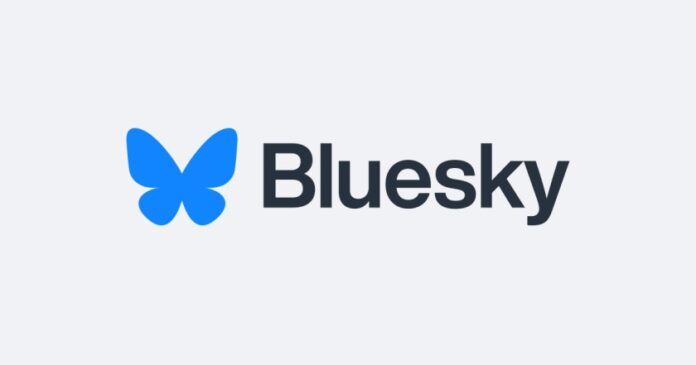The social media landscape has drastically transformed how we communicate and share information online. However, many of the dominant platforms come with considerable limitations around privacy, data ownership, and transparency. Twitter, one of the leading social networks, faces its own challenges like content moderation struggles, misinformation spread, and stagnant user growth.
Enter Bluesky: a decentralized, open-source Twitter alternative that aims to reinvent social networking. Bluesky’s newest feature allows public viewing of posts without requiring a login. This radical transparency could have significant implications for users, creators, and researchers alike.
This article will dive into Bluesky’s goals, its public viewing functionality, and the opportunities and challenges it faces in taking on centralized social media giants. We’ll explore how an open, decentralized platform like Bluesky could shape the future of social networking.
Understanding Bluesky: Building the Base
What is Bluesky?
Bluesky is a decentralized social network initiative founded in 2019. It aims to build an open protocol and infrastructure for social media based on properties like:
- Decentralization: Data owned and controlled by users, not a central platform.
- Transparency: Systems and algorithms are open source and auditable.
- Accountability: Protocols to identify bad actors while maintaining privacy.
- Interoperability: Integration with multiple clients and networks.
This differs drastically from traditional centralized platforms like Twitter, Facebook, or Instagram that control user data and content. Bluesky wants to flip the model upside down.
Benefits of Decentralization
Decentralized social networks like Bluesky offer several advantages:
- User data ownership: Information belongs to each user, rather than the platform.
- Enhanced privacy: Data isn’t concentrated into a central database.
- Censorship resistance: No single entity controls content policies.
- Open ecosystems: Protocols and systems are transparent and auditable.
- Flexibility: Apps can interoperate across different networks.
By shifting power and ownership to users, decentralized networks provide more control, autonomy, and transparency.
Current State of Bluesky
Bluesky is still in an early stage of development and testing. It has started onboarding select users through an invitation system but remains far from mainstream adoption. Key facts about Bluesky today:
- Small user base of invited testers
- Active GitHub community building out protocols
- iPhone app with basic functionality released
- Web interface and Android app in progress
- Only public content viewable currently
The limited availability and access help Bluesky iterate and improve its systems while limiting spam and abuse risks.
The Transparency Revolution: Public Viewing on Bluesky
Bluesky’s newest feature that’s generating buzz is allowing anyone to view public tweets and profiles without logging in or creating an account. Here’s how it works:
How Public Viewing Works
All posts designated as public on Bluesky are accessible by anyone online through its web interface. You can browse, read, and search public posts without an account. Public profiles show avatar, username, bio, and follow counts.
However, only authenticated users can interact – liking, replying, following, or posting content.
Benefits of Public Viewing
This public access offers several advantages:
- Increased reach for creators and their public content.
- Allows passive consumers to read without participation.
- Researchers and analysts can study unfiltered public discourse.
- Provides a view into platform activity and culture.
- Promotes radical transparency compared to closed platforms.
By opening up previously hidden conversations, Bluesky enables new applications and insights from its public data.
Comparison to Other Platforms
Platforms like Reddit, Mastodon, and even Twitter allow some degree of public access to content. However, Bluesky’s implementation differs in these key ways:
- Full public index without any account requirement.
- Native public profiles alongside posts.
- Focused on public discourse over private connections.
- Part of broader decentralization goal.
This default public access signals a fundamental rethinking of how social platforms operate and share information.
Challenges and Opportunities: The Road Ahead for Bluesky
While intriguing, Bluesky’s transparency-first model raises challenges both old and new. As it looks to the future, several questions remain open.
Potential Challenges
- Spam and abuse: Public access invites bad actors without protective friction of signup.
- Information quality: Misinformation may spread easily without moderation.
- Harassment: Private individuals could be targeted through public access.
- Legal obligations: May have to comply with regulations on public platforms.
Proposed Solutions
To combat these issues, Bluesky proposes leveraging its decentralized nature:
- Community moderation: User-driven tagging, rating, and downranking undesired content.
- Algorithmic filtering: ML models to highlight quality information and users.
- Reputation systems: Enable creators to manage interactions and highlight trusted voices.
- Anonymous accounts: Allow private personal but public professional personas.
There are no perfect solutions, but a combination of approaches could help balance transparency with quality and safety.
Future Outlook
If executed well, public access marks a pivotal shift for social media – one that Bluesky is uniquely positioned to leverage with its decentralized ethos. Widespread adoption will hinge on creating engaged communities within its transparent ecosystem.
Long term, default public viewing could empower creators over algorithms, transform social data analytics, disrupt advert-driven business models, and inspire truly participatory media platforms.
Conclusion
Bluesky’s public viewing feature represents a radical experiment in social transparency. By allowing open access without accounts, it provides a window into the possibilities of decentralized social networking.
There are certainly challenges around quality and safety to solve as Bluesky works to scale up. However, its transparent approach could be key to rebuilding user trust and agency in social platforms going forward.
As centralized networks face growing backlash, the time may be right for an open and accountable alternative. If you find current social media models limiting, consider joining Bluesky’s community. Together, we can cultivate online spaces that work for us all.


